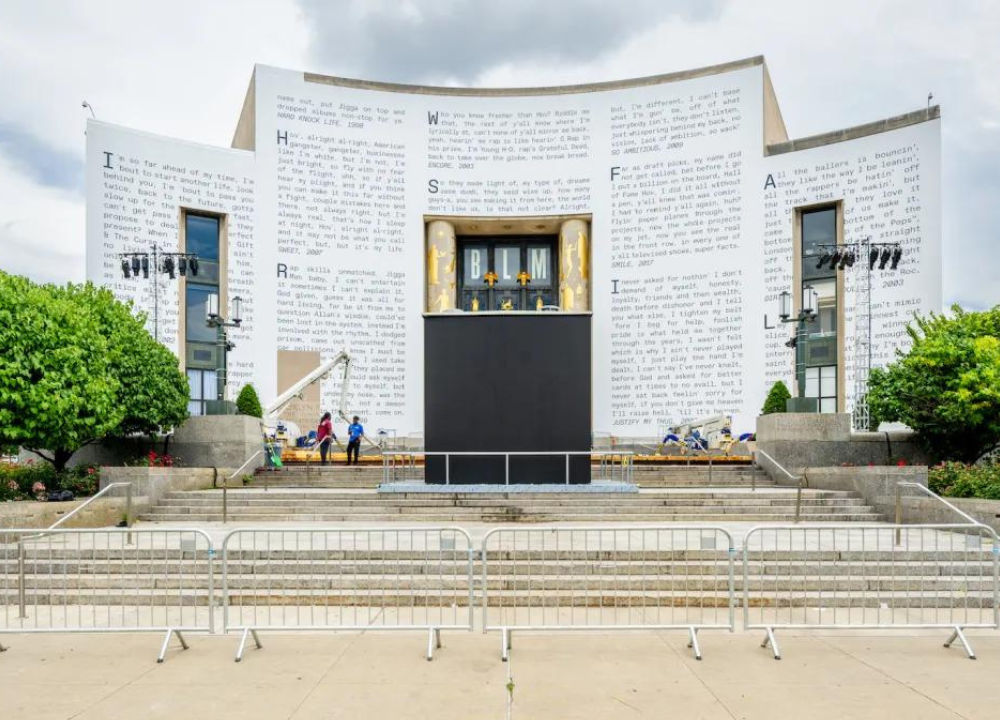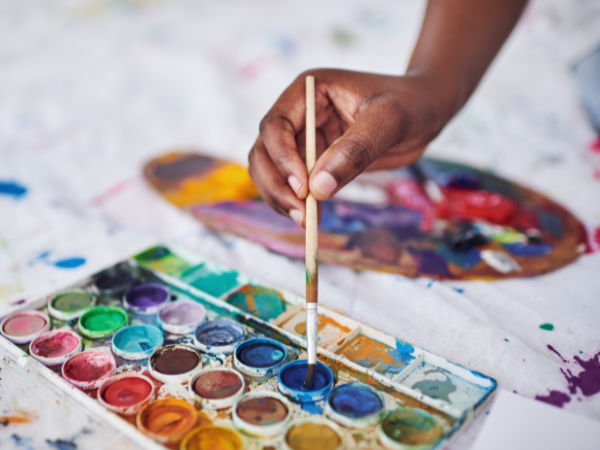Art plays a vital role in education. It shapes young minds and encourages self-expression.
In Tokyo, high school students are embracing their creativity like never before. They explore various art forms, from painting to digital design. This journey is not just about skills; it’s about finding their voice. Students share their stories through art, reflecting their culture and experiences.
Many find inspiration in their everyday lives, showing unique perspectives. This blog post takes you through the vibrant world of these young artists. You will discover how their creative paths unfold and what drives them. Join us as we explore the heart of Tokyo’s artistic youth and their remarkable journeys.
Art In Tokyo High Schools
Art in Tokyo high schools is a vibrant part of student life. It allows students to express themselves creatively. Schools encourage artistic skills through various programs. These initiatives help students explore their identity and culture. Art plays a vital role in personal growth. It connects students to their community and traditions.
Cultural Significance
Art holds deep cultural significance in Tokyo high schools. It reflects the rich history and modern influences of Japan. Through art, students learn about their heritage and the world around them. This fosters a sense of belonging and pride.
Art education promotes critical thinking and creativity. Students explore various art forms, such as:
- Calligraphy
- Painting
- Sculpture
- Photography
- Graphic design
These forms of expression connect students with their culture. They can express personal stories and social issues. Art becomes a voice for their thoughts and feelings. In group projects, students collaborate and learn teamwork. This builds friendships and strengthens community ties.
High school art exhibitions showcase student work. These events bring families and friends together. They celebrate creativity and achievements. Schools often partner with local artists. This connection exposes students to professional art practices. Overall, the cultural significance of art in Tokyo high schools shapes young minds.
Art Programs Offered
Tokyo high schools offer a wide range of art programs. These programs aim to nurture creativity and talent. Schools provide various classes to suit different interests. Popular art programs include:
- Visual Arts
- Performing Arts
- Music
- Digital Arts
Each program has unique features. For example, Visual Arts classes focus on:
| Subject | Description |
|---|---|
| Drawing | Develops skills in sketching and observation. |
| Painting | Teaches color theory and techniques. |
| Sculpture | Explores three-dimensional art forms. |
Performing Arts programs include drama, dance, and music. These programs encourage self-expression. Students learn to work together in performances. Music classes often involve learning instruments. Digital Arts programs teach skills in graphic design and animation.
Participation in these programs enhances students’ skills. It builds confidence and encourages creativity. Art education is essential for developing well-rounded individuals. Through these offerings, Tokyo high schools create a vibrant arts culture.
Student Artists
Art on Loop highlights the creative journeys of Tokyo high school students. These young artists express their thoughts and emotions through various forms of art. They explore their identities and cultures through their work. Each student brings a unique perspective to the art scene, making it vibrant and diverse.
Profiles Of Emerging Talent
Meet some of the talented students shaping Tokyo’s art landscape. Each artist has a story and a unique style. Here are a few standout profiles:
- Sakura Tanaka – A painter known for her bold colors and themes of nature.
- Hiroshi Yamamoto – A digital artist who blends traditional Japanese elements with modern technology.
- Aiko Suzuki – A sculptor whose works often reflect social issues and personal experiences.
These artists are not just students; they are storytellers. They share their views on life, love, and culture through art. Below is a table showcasing their favorite mediums and themes:
| Artist Name | Medium | Theme |
|---|---|---|
| Sakura Tanaka | Oil Paint | Nature |
| Hiroshi Yamamoto | Digital Art | Technology and Tradition |
| Aiko Suzuki | Clay | Social Issues |
These profiles reveal the depth of talent among Tokyo high school students. Their passion for art shines through their work.
Diverse Artistic Styles
The artistic styles among these students are rich and varied. Each artist explores different techniques and themes. This diversity creates a dynamic art scene.
Some students focus on traditional Japanese art forms. Others embrace contemporary styles. Here are some notable artistic styles:
- Abstract Art – Emphasizes shapes and colors over realistic representation.
- Surrealism – Blends dream-like scenes with reality.
- Pop Art – Draws inspiration from popular culture and everyday objects.
These styles reflect the students’ personal experiences and cultural backgrounds. The following chart highlights the prevalence of each style among the artists:
| Art Style | Number of Artists |
|---|---|
| Abstract Art | 5 |
| Surrealism | 3 |
| Pop Art | 4 |
This variety shows how students express themselves. Each style adds to the rich tapestry of Tokyo’s art community.

Creative Inspirations
Art on Loop showcases the vibrant creativity of Tokyo high school students. Their works reflect personal stories and cultural backgrounds. This blog explores their creative inspirations. From local influences to global trends, we see how these young artists express themselves.
Local Influences
Tokyo is a city rich in culture and history. Local influences shape the artistic expressions of its students. Traditional art forms and modern urban life blend seamlessly. Many students draw inspiration from:
- Japanese folklore and mythology
- Nature, including cherry blossoms and Mount Fuji
- Pop culture, such as anime and manga
- Street art and graffiti found in urban spaces
These elements create a unique artistic voice. Students often visit local temples, parks, and galleries. They observe the world around them. This helps them connect with their roots.
Here’s a table showing common local themes in their art:
| Theme | Description |
|---|---|
| Nature | Incorporates landscapes, plants, and animals. |
| Tradition | Reflects rituals, festivals, and historical events. |
| Modern Life | Explores city life, technology, and youth culture. |
These local influences drive creativity. They encourage students to explore their identity through art.
Global Trends
While local influences are strong, global trends also play a role. The internet connects students to worldwide art movements. They see diverse styles and techniques. This exposure broadens their horizons.
Popular global trends include:
- Street art movements from cities like New York and Berlin
- Digital art and animation
- Sustainable art practices focusing on the environment
- Social issues highlighted through various mediums
Students often blend these trends with their local styles. This fusion creates fresh perspectives. It helps them engage with global conversations.
Some examples of global art movements influencing Tokyo students:
| Movement | Impact |
|---|---|
| Street Art | Encourages public expression and activism. |
| Digital Art | Offers new tools for creativity and sharing. |
| Environmental Art | Promotes awareness of ecological issues. |
These trends inspire students to think critically. They reflect on their roles as artists in a global society.
Artistic Challenges
Art on Loop showcases the creative journeys of high school students in Tokyo. These young artists face many artistic challenges. Their passion for art often clashes with academic demands. Finding a balance is tough. Self-doubt can creep in, affecting their confidence. This section explores how students tackle these obstacles.
Balancing Studies And Art
Tokyo high school students juggle demanding study schedules and their love for art. They face pressure to excel in exams while nurturing their creativity. This balance is crucial for their personal growth.
Many students follow a routine to manage both responsibilities. Here are some common strategies:
- Setting clear priorities for schoolwork and art projects.
- Creating a schedule that includes time for both study and practice.
- Using weekends and holidays to focus on art.
Some students even join art clubs. These clubs provide a supportive environment. They help students share ideas and resources. A table below shows common time management techniques:
| Technique | Description |
|---|---|
| Time Blocking | Allocate specific hours for study and art. |
| Daily Goals | Set small, achievable goals for both art and academics. |
| Peer Support | Work with friends to stay motivated. |
Despite challenges, students remain dedicated. They believe that art enriches their lives. It also enhances their academic performance.
Overcoming Self-doubt
Self-doubt can hinder creativity. Many Tokyo high school students experience it. They worry about their skills and unique style. These feelings can be discouraging.
To combat self-doubt, students employ various techniques:
- Seeking feedback from teachers and peers.
- Practicing regularly to build confidence.
- Reflecting on past successes in art.
Students often share their struggles with friends. This support network helps them feel understood. Here are some steps students take to overcome self-doubt:
- Start small: Create simple art pieces to build confidence.
- Set realistic expectations: Understand that growth takes time.
- Celebrate progress: Acknowledge improvements, no matter how small.
Through these methods, students learn to embrace their creativity. They realize that self-doubt is part of the journey. This understanding allows them to grow as artists.
Exhibition Opportunities
Art on Loop showcases the creative journeys of Tokyo high school students. It highlights their unique talents and perspectives. One important aspect of this exploration is the exhibition opportunities. These opportunities allow students to display their work and gain valuable experience. They can connect with others and share their creativity with the community.
School Art Shows
School art shows are a vital platform for students. They provide a space where students can showcase their artwork. Here are some benefits of school art shows:
- Boosts confidence: Students gain confidence by presenting their work.
- Encourages creativity: Exhibiting art inspires students to create more.
- Builds community: Shows bring students, teachers, and families together.
These events often feature a range of artwork, from paintings to sculptures. Schools usually organize these shows at the end of the academic year. This allows students to reflect on their progress throughout the year.
| Type of Artwork | Common Themes |
|---|---|
| Paintings | Identity, Nature, Urban Life |
| Sculptures | Emotion, Movement, Culture |
| Digital Art | Technology, Fantasy, Society |
School art shows not only highlight student talent but also encourage a love for art. They allow students to learn from each other and appreciate different styles.
Community Collaborations
Community collaborations expand exhibition opportunities beyond school walls. Local galleries often partner with schools to host student exhibitions. This collaboration helps students reach a wider audience.
Here are some advantages of community collaborations:
- Real-world experience: Students learn to present their work professionally.
- Networking: Students meet local artists and art enthusiasts.
- Support for art education: Communities often provide resources and funding.
Collaborative events can include workshops, joint exhibitions, and art fairs. Students can work on projects that reflect community themes or issues. This connection fosters a sense of belonging and responsibility.
| Collaboration Type | Description |
|---|---|
| Workshops | Students learn techniques from local artists. |
| Joint Exhibitions | Student and professional art displayed together. |
| Art Fairs | Students sell their artwork and gain experience. |
Through community collaborations, students experience the value of art in society. They can express their thoughts and feelings while contributing to their community’s cultural landscape.
Conclusion
Tokyo high school students show us the power of art. Their creative journeys inspire both young and old. Each student brings a unique story and vision. Art helps them express feelings and thoughts. This process connects them to each other and the world.
Encouraging these talents can lead to brighter futures. Supporting young artists creates a vibrant community. Embracing their creativity is essential for growth. Let’s celebrate their journeys and the art they create. Together, we can nurture the next generation of artists.




